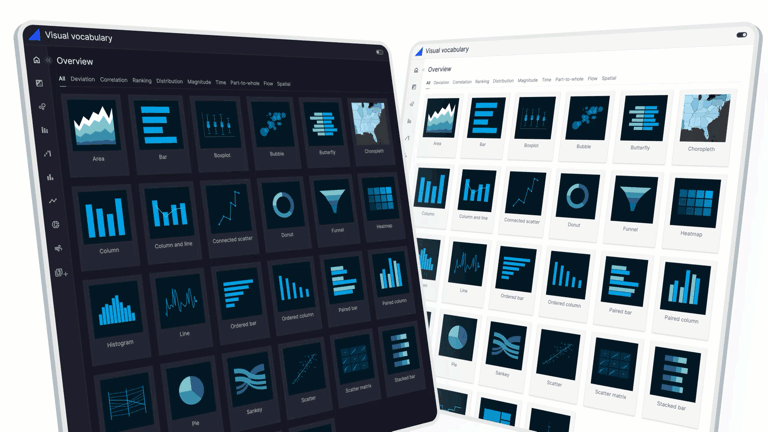About
Vizro is an open-source, Python-based low-code framework that lets users quickly build high-quality, multi-page data visualization dashboards using simple configuration and pre-built components. It supports deployment at scale with optional high-code extensions for customization.
Capabilities

Overview
Vizro addresses the common bottleneck of turning raw data into interactive, production‑ready visualizations without requiring deep engineering or design skills. By exposing a Model Context Protocol (MCP) interface, it lets AI assistants such as Claude request the generation of dashboards, charts, or data transformations directly from a declarative configuration. This removes the need for manual coding of layout logic, styling rules, or data pipelines, allowing developers to focus on business insight rather than boilerplate UI work.
The server translates a high‑level JSON/YAML/Pydantic model that describes components, controls, actions, layouts, and navigation into a fully functional web application. Each component (charts, tables, KPI cards) is paired with intuitive controls like dropdowns or sliders, and actions enable drill‑throughs or data exports. The configuration can be authored in multiple formats, giving teams flexibility to integrate Vizro into existing CI/CD pipelines or to embed it within larger data‑science workflows. Once the MCP request is processed, the resulting app can be deployed to any cloud platform or served locally for rapid prototyping.
Key capabilities include:
- Low‑code configuration: Build multi‑page dashboards with a few lines of YAML or Python dicts, leveraging built‑in best practices for visual design.
- Extensibility: Add custom components or visual formatting via optional high‑code extensions, keeping the core low‑code workflow intact.
- Responsive layouts: Grid and flexible containers automatically adapt to screen size, ensuring a consistent user experience across devices.
- Rich interactivity: Controls and actions support complex interactions such as dynamic filtering, drill‑throughs, and export functionality without additional JavaScript.
In real‑world scenarios, Vizro shines when data analysts need to share insights quickly with stakeholders who lack technical expertise. For example, a marketing team can generate a campaign performance dashboard by simply feeding the MCP server a configuration that references their SQL data source, while an AI assistant can suggest layout tweaks or new visualizations based on user feedback. Similarly, product teams can prototype feature‑usage dashboards that evolve as new metrics are added, all through declarative updates.
Integration into AI workflows is straightforward: the MCP server exposes endpoints for resources (data sources), tools (chart types, export functions), and sampling (preview data). An AI assistant can query these endpoints to retrieve available options, propose configurations, and even generate the final YAML on demand. This tight coupling enables a seamless loop where natural‑language prompts translate into fully functional dashboards, dramatically accelerating the data‑to‑insight pipeline.
Related Servers
MindsDB MCP Server
Unified AI-driven data query across all sources
Homebrew Legacy Server
Legacy Homebrew repository split into core formulae and package manager
Daytona
Secure, elastic sandbox infrastructure for AI code execution
SafeLine WAF Server
Secure your web apps with a self‑hosted reverse‑proxy firewall
mediar-ai/screenpipe
MCP Server: mediar-ai/screenpipe
Skyvern
MCP Server: Skyvern
Weekly Views
Server Health
Information
Explore More Servers
GitHub Integration MCP Server Test
Validate MCP server integration with GitHub operations
Amap MCP Server
Geospatial tools for Chinese maps and routing
Mcp Repo 9Ebf5242
A test MCP repository for GitHub integration
GitMCP
Turn any GitHub repo into a live AI documentation hub
MCP Tools CLI
Command‑line client for interacting with Model Context Protocol servers
Graphlit MCP Server
Integrate all dev tools into a searchable knowledge base